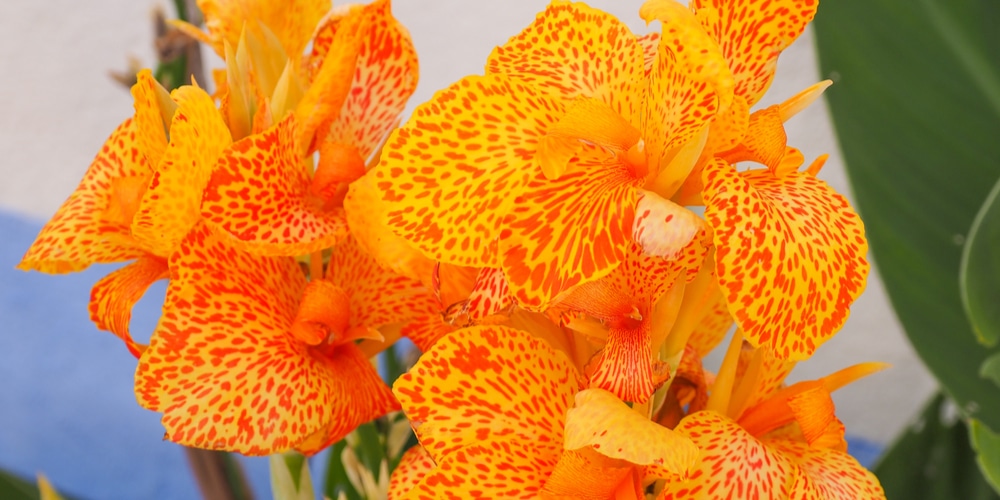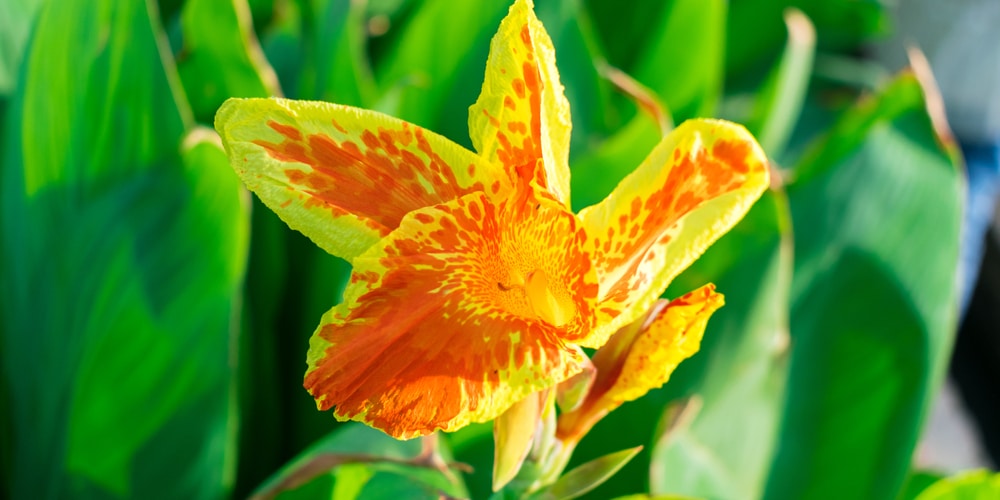Canna lilies bring forth an undeniable presence in your yard or garden with their multicolored veined leaves and tall, rich blooms. Growing a Canna lily in zone 6 is possible with the help of a trick called ‘overwintering.’ This means that you’ll need to dig them up and bring them inside your house so they can survive the winter.
When to Plant Canna Lily in Zone 6?

Canna varieties originally come from warm climates, but they’re tough enough to survive in USDA hardiness zones 2 to 6.
These big herbaceous plants are versatile in that you can plant them directly in your garden or put them in containers. Each option, however, will have its own set of pros and cons in relation to your hardiness zone.
The best time to plant canna lily is from late spring to early summer if you live in zone 6. This is because the risk of frost has passed, and the ground or soil will be warmer (and thus more conducive for canna growth). For those with a shorter growing season window, you’ll want to start sooner by putting your canna lily in a greenhouse or indoors in a pot or large container.
Cannas won’t likely survive winters in zone 6, but here’s where the plant shines. It has a similar characteristic to bulbs, and cannas usually sprout from underground rhizomes or stems. Dividing these rhizomes is a more reliable way of propagating cannas than starting them from seed.
It’s also a good idea to divide the rhizomes during springtime and when you’re ready to put them back on the ground. Each rhizome should have an ‘eye’ or a small white bump that indicates a node where a new plant will grow.
How to Overwinter Canna Lilies in Zone 6
Overwintering cannas is not that difficult and an absolute must if you live within USDA hardiness zones 2 through 6.
Before frost strikes and winter comes, you’ll want to get your trusty shovel and dig your cannas out of the ground. If the leaves have become damaged, you can use pruning shears to cut them off. Shake excess soil and allow it to dry for several days.
It’s recommended that you cut the stem back to about two inches or so, then wrap it in a newspaper. Find a spot in your house that’s cool and dry and leave them there for the entire winter season.
From there, you can wait until the frost has passed and the outdoor temperature consistently reaches 50 degrees F and above.
Remember that canna lilies can be grown in pots and containers. If you’ve done it this way, then there’s no need to dig up the rhizomes and store them for winter. Just bring the pots indoors and away from cold drafts, and it should do just fine. During this time, you should not feed it fertilizer. It doesn’t need much water as well.
Wait patiently until the frost has passed, then prepare your cannas for planting again. You can plant them in the same spot in your yard or garden or shift them where they can get more sun. Cannas are considered perennial plants in zones 7 to 10 as they can be left alone in the ground and survive the cold temperature in the aforementioned regions.
How to Care for Canna Lily Zone 6
Cannas love the sun and prefer a warm environment. You’ll know they’re in the right place if they reward you with a profusion of bright-colored flowers and their leaves develop deep, dark colors.
Aside from needing full sun, these plants also want rich soil. Gardeners should keep their cannas’ soil moist but not waterlogged by using well-draining media and a similar container. Remember to water it more often during hot days and summer months to avoid brown leaves.
It’s worth noting that rhizomes can take some time to sprout new growth. Just be patient and wait for signs of life- if you see a stem or leaf then it’s a signal that the canna lily is thirsty and would like a drink of water.
Canna lily zone 6: Conclusion
Cannas bloom profusely without needing too much help from you. Just remember to deadhead, or remove spent flowers to keep the blooms coming.
Related:
